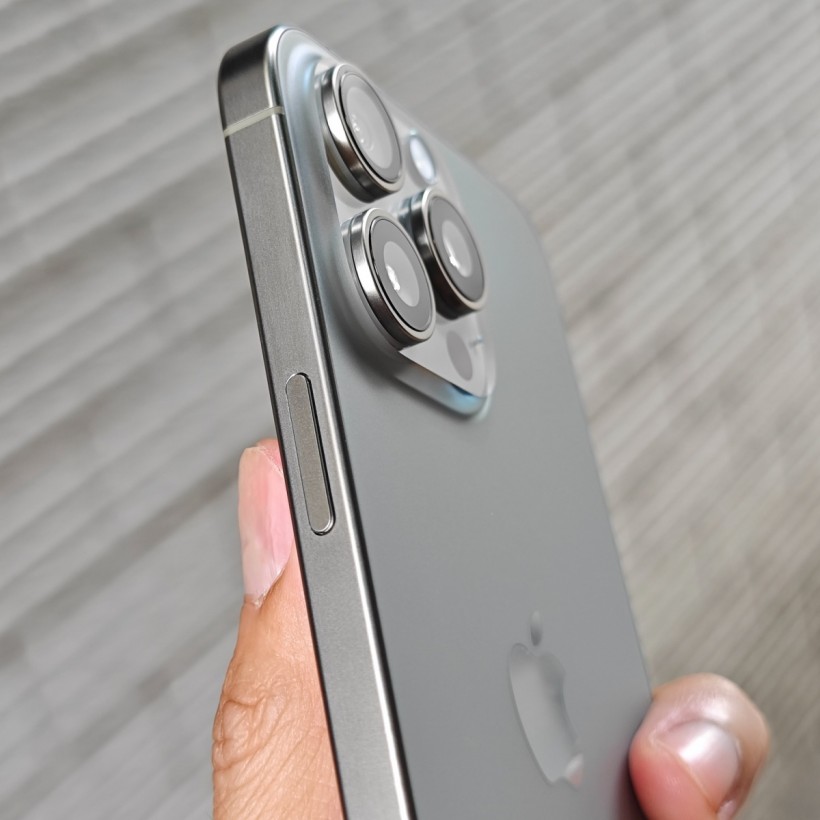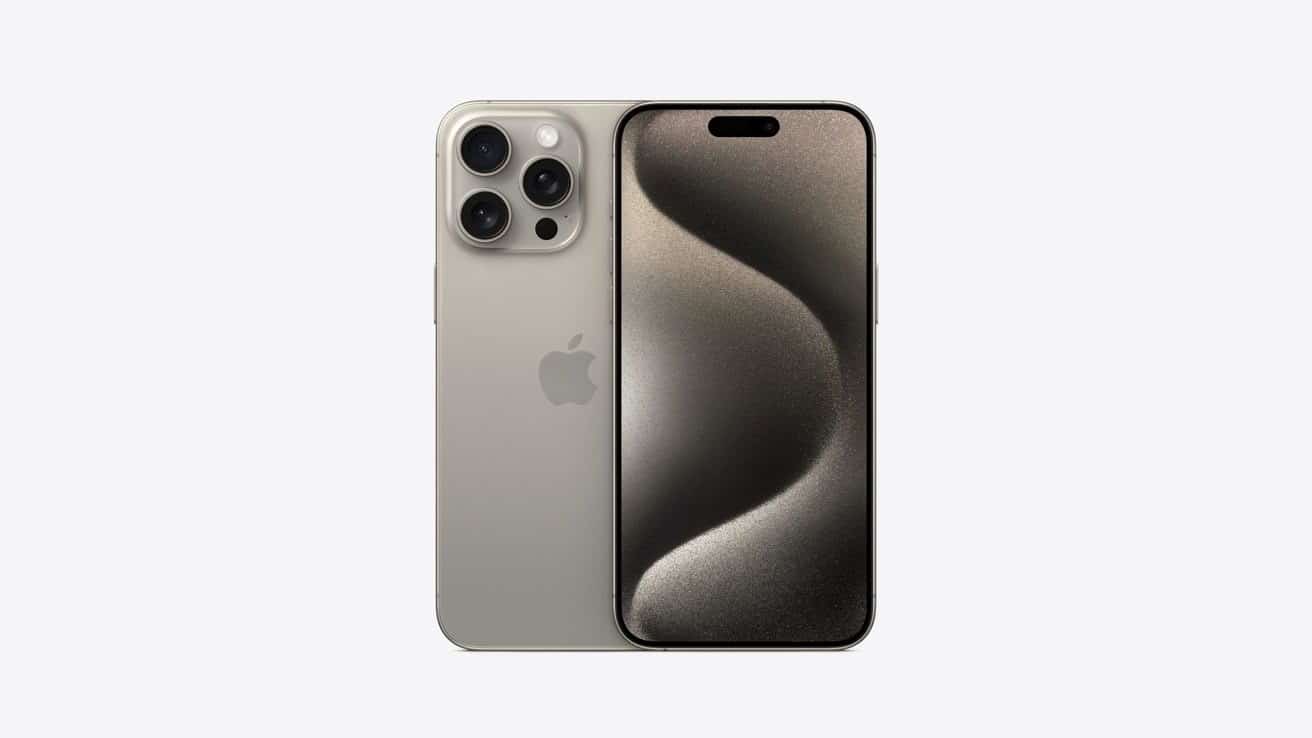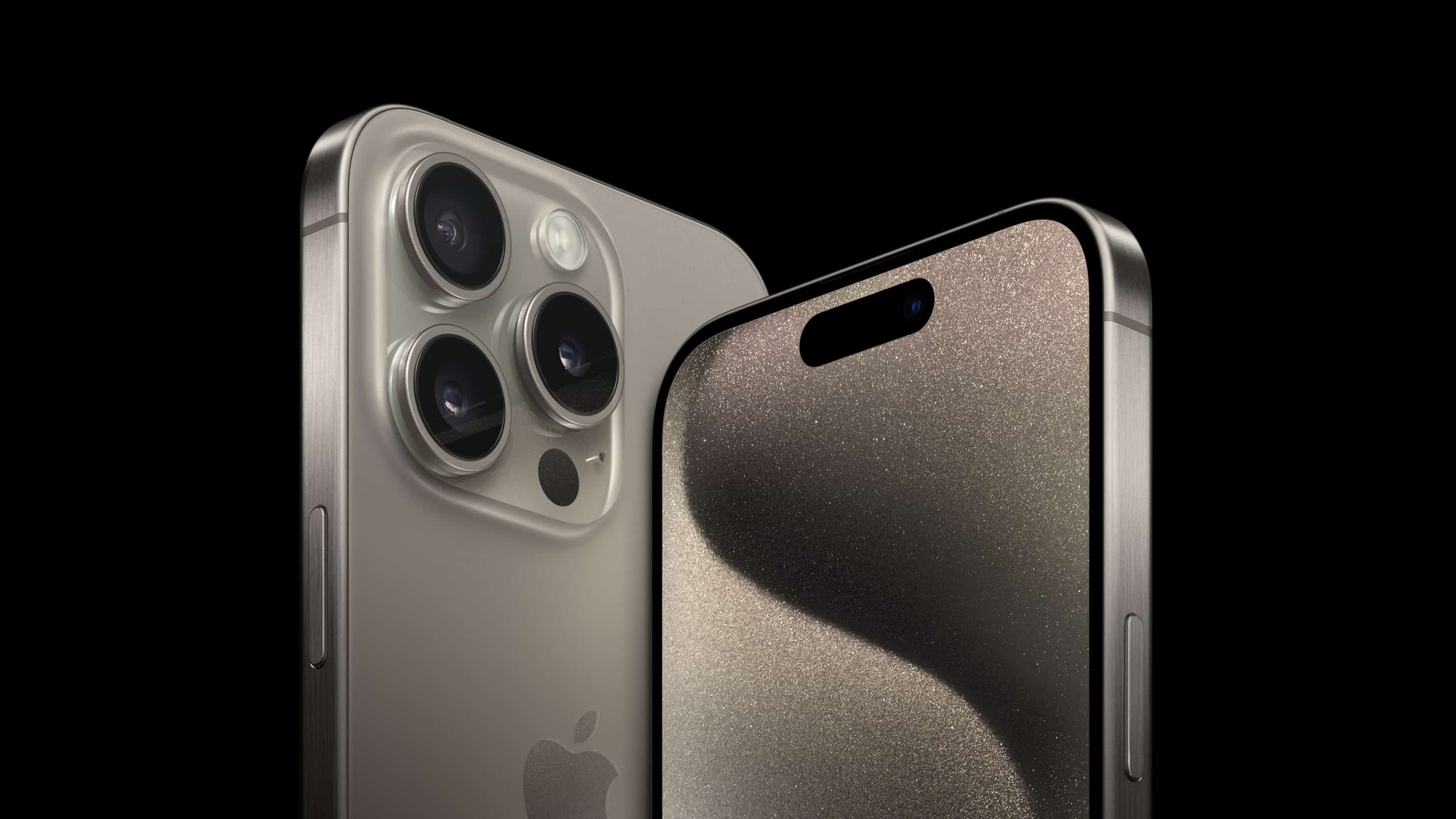Highlights
- Glass-plastic lens in iPhone 15 Pro Max enhances optical quality and device durability.
- Hybrid 1G3P lens design reduces weight and bulk in sleek smartphone form.
- Potential industry-wide impact with other brands expected to adopt similar technology.
Apple’s iPhone 15 Pro Max is likely to be a significant leader in smartphone technology with its innovative glass-plastic hybrid lens.
This cutting-edge feature, known as the 1G3P lens (one glass element, three plastic), is said to combine the optical excellence of glass with the versatility of plastic, and might set up precedence for other OEMs to follow suit.
Advantages of the Glass-Plastic Hybrid Lens

The integration of the glass-plastic lens in the iPhone 15 Pro Max addresses key challenges traditionally associated with glass lenses in smartphones.
As highlighted by renowned Apple analyst Ming-Chi Kuo, glass, while offering unmatched optical quality, contributes to increased bulk, weight, and fragility in sleek smartphone designs.
The glass-plastic lens in the iPhone 15 Pro Max successfully overcomes these limitations, optimizing the balance between quality and practicality.
Apart from that It also works to minimize the strain on OIS motors, which is likely to lead to slightly lower power consumption and improved device durability.
However, the most important aspect of this hybrid construction is that the inclusion of plastic elements mitigates the risk of damage from accidental drops, enhancing the user experience.
Innovative Design and Industry Impact

Following the introduction of this technology by Apple, as pointed out by Ming-Chi Kuo, other premium smartphone brands are likely to adopt similar hybrid lens technologies.
You can bet that there is a significant shift coming in smartphone optical design, with Apple and Huawei already leading the way.
Future Developments and Production

The production of the glass-plastic lens iPhone component in the iPhone 15 Pro Max is managed by Largan, with the glass element currently sourced from another supplier.
Largan is in the process of developing its own glass element to fulfill Apple’s high-quality standards, aiming to produce the entire module in-house by 2025 or 2026.
Furthermore, the tetraprism lens, currently exclusive to the iPhone 15 Pro Max, is expected to be featured in the iPhone 16 Pro next year, suggesting an expansion in its use across Apple’s future models.
APPLE IPHONE 15 PRO MAX SPECIFICATIONS
Key Specs
| RAM | 6 GB |
| Processor | Apple A15 Bionic |
| Rear Camera | 12 MP + 12 MP + 12 MP |
| Front Camera | 12 MP |
| Battery | 4400 mAh |
| Display | 6.7 inches (17.02 cm) |
General
| Launch Date | August 16, 2023 (Unofficial) |
| Operating System | iOS v15 |
Performance
| Chipset | Apple A15 Bionic |
| CPU | Hexa Core (3.23 GHz, Dual core, Avalanche + 1.82 GHz, Quad core, Blizzard) |
| Architecture | 64 bit |
| Fabrication | 5 nm |
| Graphics | Apple GPU (four-core graphics) |
| RAM | 6 GB |
Display
| Display Type | OLED |
| Screen Size | 6.7 inches (17.02 cm) |
| Resolution | 1284 x 2778 pixels |
| Aspect Ratio | 19.5:9 |
| Pixel Density | 457 ppi |
| Screen Protection | Yes |
| Bezel-less display | Yes |
| Touch Screen | Yes, Capacitive Touchscreen, Multi-touch |
| Refresh Rate | 120 Hz |
Design
| Waterproof | Yes, Water resistant, IP68 |
| Ruggedness | Dust proof |
Camera
| MAIN CAMERA | ||
| Camera Setup | Triple | |
| Resolution | 12 MP f/1.6, Wide Angle, Primary Camera 12 MP , Telephoto Camera 12 MP, Ultra-Wide Angle Camera |
|
| Autofocus | Yes | |
| Flash | Yes, Dual LED Flash | |
| Image Resolution | 4000 x 3000 Pixels | |
| Settings | Exposure compensation, ISO control | |
| Shooting Modes | Continuous Shooting High Dynamic Range mode (HDR) |
|
| Camera Features | Digital Zoom Auto Flash Face detection Touch to focus |
|
| Video Recording | 1920×1080 @ 30 fps | |
| FRONT CAMERA | ||
| Camera Setup | Single | |
| Resolution | 12 MP f/2.3, Primary Camera | |
| Video Recording | 1920×1080 @ 30 fps | |
Battery
| Capacity | 4400 mAh |
| Type | Li-ion |
| Removable | No |
| Quick Charging | Yes, Fast |
| USB Type-C | No |
Storage
| Internal Memory | 128 GB |
| Expandable Memory | No |
Network & Connectivity
| SIM Slot(s) | Dual SIM, GSM+GSM |
| SIM Size | SIM1: Nano, SIM2: eSIM |
| Network Support | 5G Not Supported in India, 4G Supported in India, 3G, 2G |
| VoLTE | Yes |
| SIM 1 |
4G Bands:
TD-LTE 2300(band 40)
FD-LTE 1800(band 3) 3G Bands:
UMTS 1900 / 2100 / 850 / 900 MHz
2G Bands:
GSM 1800 / 1900 / 850 / 900 MHz
GPRS:
Available
EDGE:
Available
|
| SIM 2 |
4G Bands:
TD-LTE 2300(band 40)
FD-LTE 1800(band 3) 3G Bands:
UMTS 1900 / 2100 / 850 / 900 MHz
2G Bands:
GSM 1800 / 1900 / 850 / 900 MHz
GPRS:
Available
EDGE:
Available
|
| Wi-Fi | Yes, Wi-Fi 4 (802.11 b/g/n) |
| Wi-Fi Features | Mobile Hotspot |
| Bluetooth | Yes, v5.0 |
| GPS | Yes with A-GPS, Glonass |
| NFC | Yes |
Multimedia
| FM Radio | No |
| Loudspeaker | Yes |
| Audio Jack | Lightning |
Sensors
| Fingerprint Sensor | No |
| Other Sensors | Light sensor, Proximity sensor, Accelerometer, Barometer, Compass, Gyroscope |
FAQs
Q1: What is the glass-plastic lens in the iPhone 15 Pro Max?
A1: The glass-plastic lens in the iPhone 15 Pro Max, known as the 1G3P lens, combines one glass element with three plastic ones. This design offers the high optical quality of glass while reducing the weight, bulk, and fragility typically associated with glass lenses in smartphones.
Q2: How does the glass-plastic lens benefit smartphone users?
A2: The glass-plastic lens in the iPhone 15 Pro Max provides users with enhanced optical performance without the added bulk and weight of traditional glass lenses. It also reduces the strain on OIS motors, potentially lowering power consumption and improving device durability.
Q3: Will other smartphone manufacturers follow Apple’s glass-plastic lens technology?
A3: According to Ming-Chi Kuo, other premium smartphone brands are likely to adopt glass-plastic hybrid lens technology following Apple’s lead. This shift, already seen with Apple and Huawei, indicates a significant change in smartphone optical design.
Also Read: iPhone 15 Possible Production Cuts: Reported Insights into Apple’s Supply Chain Challenges
Also Read: Apple iPhone 15 reportedly spotted on BIS Certification website Under Model Name A3094
